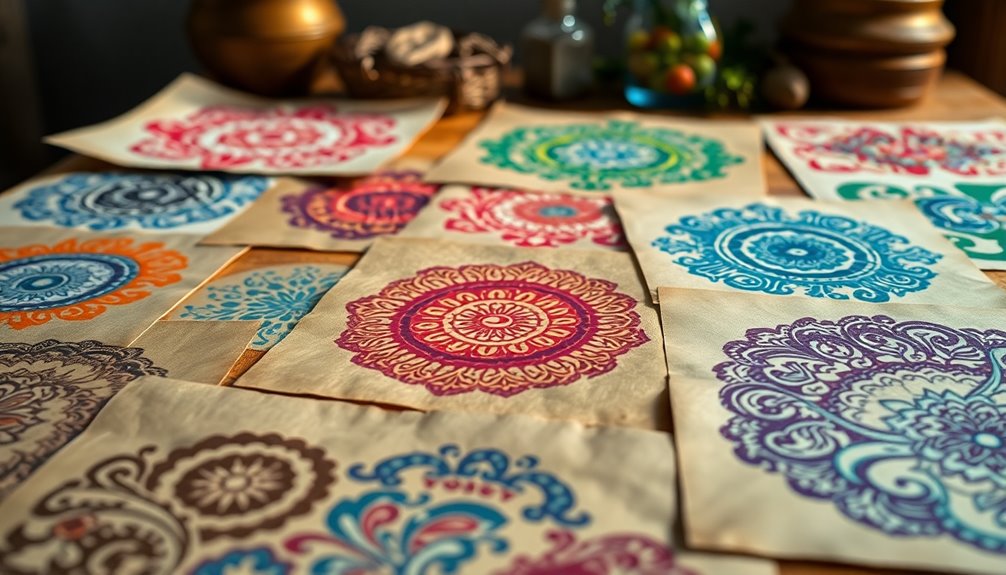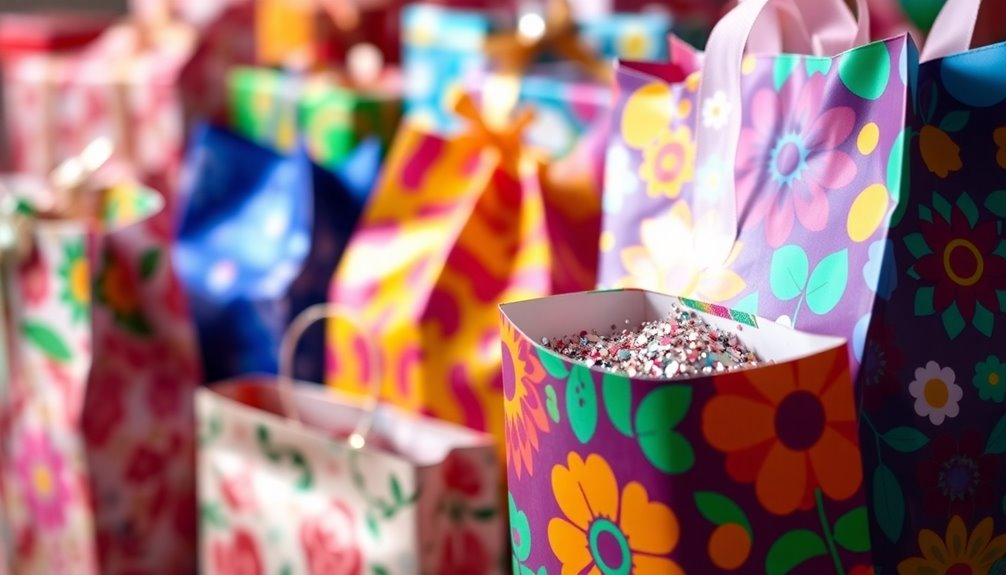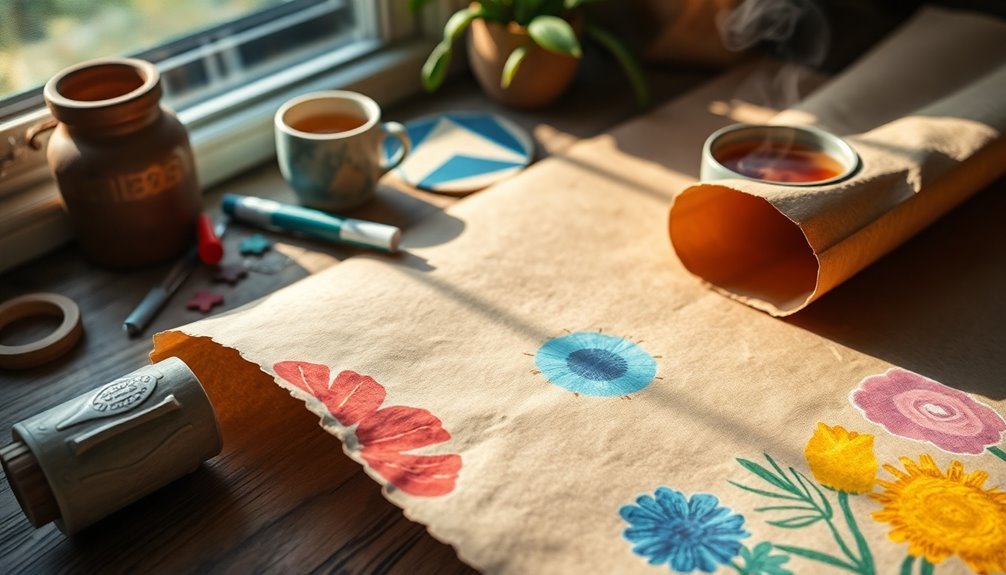Printing on kraft paper can truly surprise you with its unique textures and eco-friendly appeal. You'll find that the natural fibers create a rustic look, perfect for branding and packaging. While bold colors pop beautifully, pastels might blend in more than you expect. Keep in mind that ink absorption can lead to some bleeding, so adjusting your printer settings is key. The versatility of techniques like digital or screen printing allows for striking finishes and customizations. You'll discover that these unexpected results not only enhance your projects but elevate your brand's image in a sustainable way. Curious about more tips?
Key Takeaways
- Kraft paper's unique texture enhances printed designs, creating an organic and vintage aesthetic that captivates consumers.
- Offset printing yields high-quality results, ideal for intricate designs, ensuring professional-grade outcomes on kraft paper.
- Digital printing allows for vibrant colors and cost-effective production, making it suitable for smaller print runs on kraft paper.
- Eco-friendly characteristics of kraft paper align with consumer preferences, enhancing brand image and commitment to sustainability.
- Utilizing finishing techniques like embossing or foil stamping adds a luxurious touch, elevating the visual appeal of printed kraft paper items.
Unique Textures and Colors
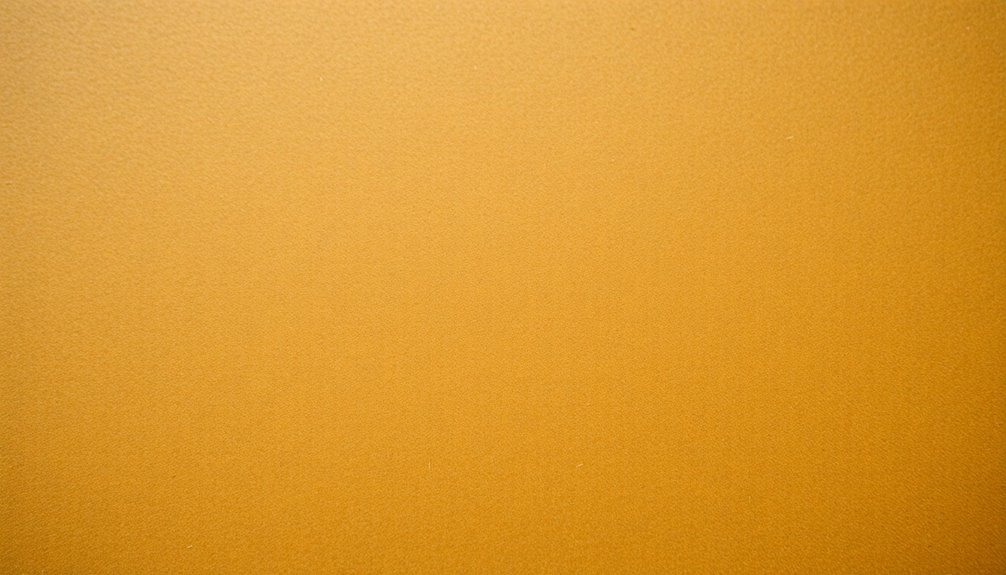
Exploring unique textures and colors in printing on kraft paper can elevate your projects significantly. The natural fiber texture of brown kraft paper offers an organic aesthetic that enhances the earthy feel of your designs. This texture absorbs ink differently, creating a tactile experience that can add depth to your printed products, especially in rustic or bohemian themes.
Consider incorporating finishing techniques like embossing or debossing; these methods create raised or indented effects that further enrich the tactile quality. Foil stamping adds a metallic touch, giving your projects a high-end look, while edge gilding provides a chic finish. Die cutting allows for custom shapes, introducing unique textures and designs. Additionally, the use of high-quality kraft paper ensures that your printed materials will have a premium feel that resonates with your audience.
When it comes to colors, remember that brown kraft paper absorbs ink, which can affect vibrancy. Cooler colors tend to pop, while pastels may blend into the background. Utilizing digital printing helps maintain color quality despite this absorbency. Combining these textures and colors with your design can result in visually striking products that truly stand out. Don't hesitate to experiment; the results might surprise you!
Kraft Paper Characteristics
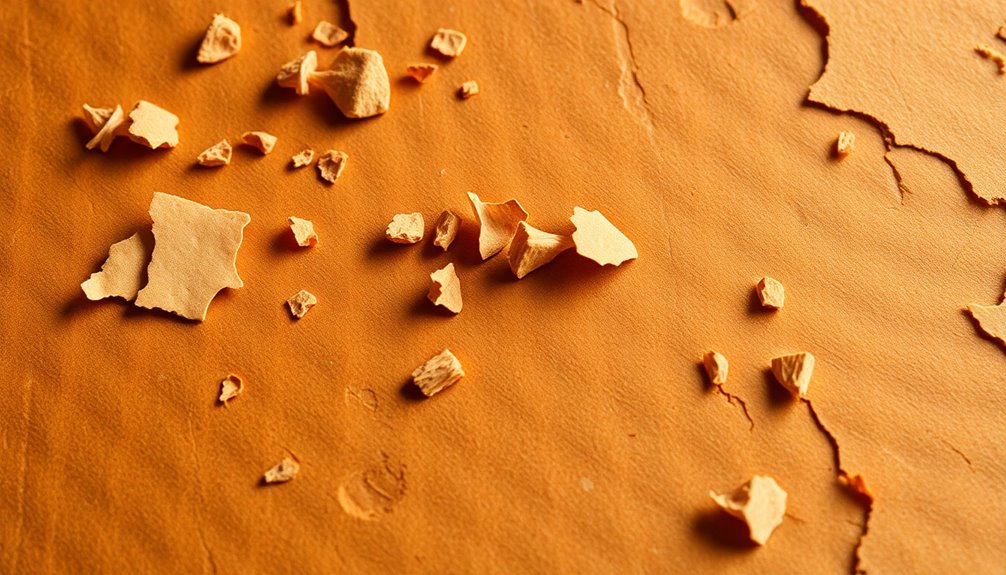
Kraft paper boasts impressive characteristics that make it a favorite choice for various applications. Its high tensile strength and tear resistance make it ideal for packaging heavy or bulky items, reducing the risk of breakage during transport or storage. You'll appreciate how porous options, like sack kraft paper, offer high elasticity and can withstand rough handling, ensuring your items remain secure.
One of kraft paper's standout features is its versatility. You can use it in everything from supermarket bags to protective wraps and industrial packaging. Its adaptability means you can print, laminate, and treat it to meet various aesthetic and functional needs. Plus, it's compatible with almost every printing solution, perfect for customizing your projects. Additionally, its high-strength compression performance makes it a reliable option for safeguarding merchandise during transit.
When it comes to printability, kraft paper shines. White kraft paper is especially suited for high-quality images and letters, allowing you to express your creativity. Just remember to select the right printer and settings for optimal results. Overall, kraft paper's unique blend of strength, versatility, and printability makes it an excellent choice for both personal and business projects.
Use for Eco-Friendly Packaging
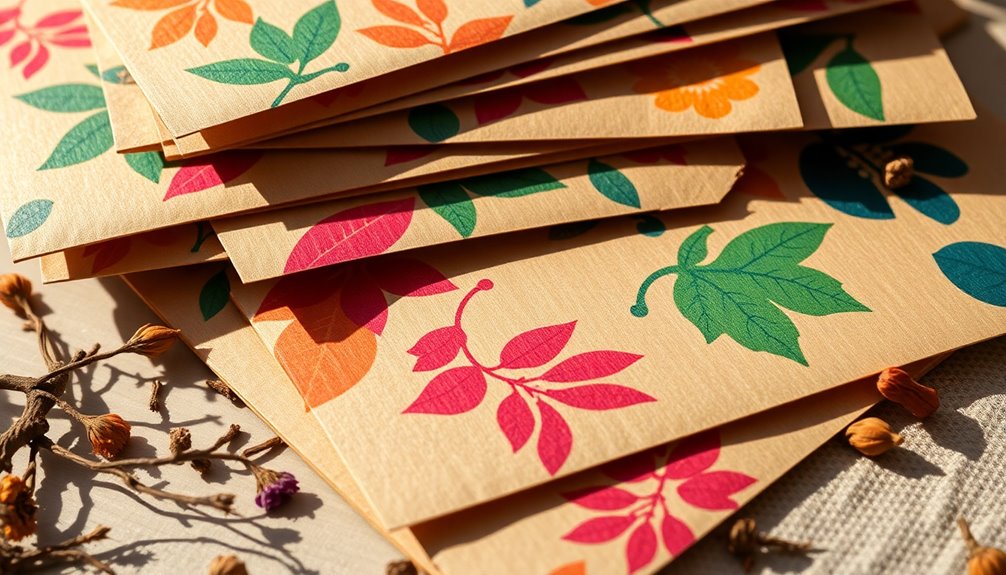
Eco-friendly packaging has become increasingly important in today's environmentally conscious market, and kraft paper stands out as an excellent choice. Made from sustainably sourced wood pulp, it reduces dependence on non-renewable resources while offering a biodegradable and compostable solution. Within weeks, kraft paper decomposes like fallen leaves, making it a smart alternative to traditional packaging materials. Additionally, kraft paper's superior strength is a key factor in its effectiveness as a packaging solution. Environmental innovations are increasingly incorporating materials like kraft paper to promote sustainability in packaging.
Using kraft paper aligns with your brand's sustainability goals. Options like FSC-certified kraft paper ensure that trees are harvested responsibly, nurturing forest ecosystems. Plus, you can recycle kraft paper, reducing waste and alleviating landfill pressure.
Kraft paper is versatile, suitable for various packaging solutions, from corrugated boxes to custom-printed totes. Its durability and tear resistance protect your products during shipping, while its customizable surface allows for high-quality printing, enhancing your brand image.
When you purchase kraft paper bags in bulk, you often find them more cost-effective than plastic alternatives. This not only improves your bottom line but also enhances customer experience by showing your commitment to eco-friendly values. In a world where sustainability matters, kraft paper packaging is a choice that wows customers and benefits the planet.
Benefits and Drawbacks
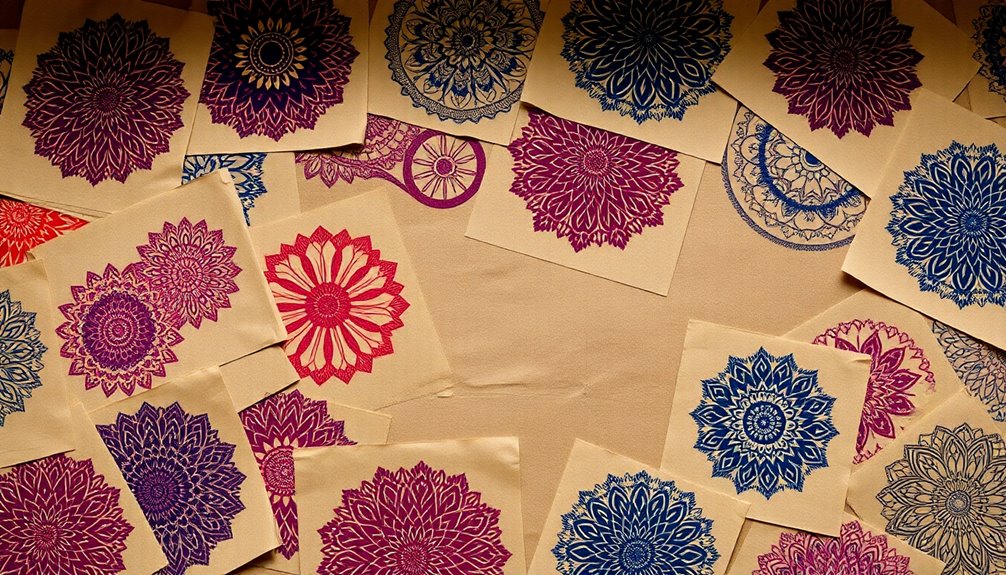
When considering printing on kraft paper, it's essential to weigh both the benefits and drawbacks of this unique material. One of the standout benefits is its distinct texture and natural brown color, which offers a vintage, eco-friendly aesthetic. You'll find that bold colors, like black or white, create a striking visual contrast that captures attention. Plus, using kraft paper reinforces an eco-friendly image, appealing to conscious consumers. Its minimalist design complements various applications, from invitations to menus. Additionally, kraft paper is recyclable and biodegradable, making it an excellent choice for environmentally conscious projects.
However, there are drawbacks to keep in mind. The brown base color may limit your ability to achieve vibrant hues, particularly with light or pastel shades. Kraft paper's fiber structure absorbs ink quickly, which can lead to bleeding or blurred details. Additionally, the uneven surface makes it difficult to print large solid color blocks evenly. If you plan to laminate, be cautious, as the paper's texture can create bubbles or mold issues. Lastly, its rigidity and tendency to wrinkle could compromise print quality, especially after folding or applying pressure. Balancing these factors will help you decide if kraft paper is the right choice for your project.
Successful Brand Packaging Strategies
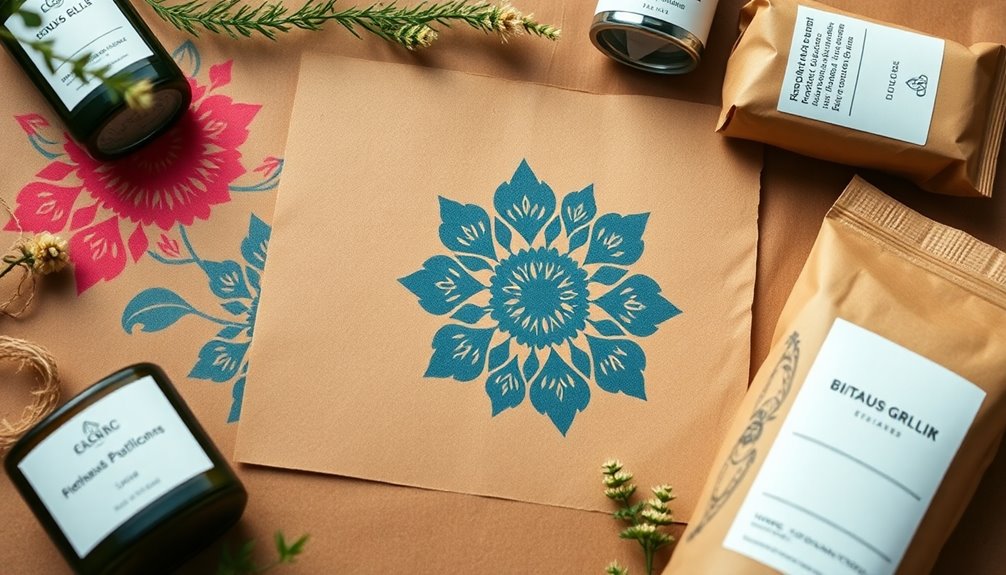
Effective brand packaging strategies are crucial for standing out in today's competitive market. Your packaging design isn't just a container; it represents your company's identity and values. By aligning your brand development strategy with innovative packaging, you create a powerful tool for differentiation. Think about standout designs like Pringles' cylindrical tube or Coca-Cola's iconic contour bottle—they become memorable symbols of the brand.
Personalization is another key strategy. When you tailor your packaging to specific target audiences, like Coca-Cola did with its "Share a Coke" campaign, you forge stronger emotional connections and encourage brand loyalty. Seasonal or limited-edition custom packaging can also spark repeat purchases, making customers feel special. Additionally, data-driven strategies allow brands to continuously refine their packaging based on consumer feedback and preferences. For instance, incorporating eco-friendly materials can enhance brand perception while appealing to environmentally conscious consumers. Furthermore, utilizing traditional textiles in packaging design can create a unique cultural touch that resonates with customers. Embracing sustainable housing trends can also reflect your brand's commitment to innovation and eco-friendliness. Moreover, investing in precious metals for packaging can symbolize quality and stability, much like how they enhance a diversified portfolio.
Sustainability plays a significant role, too. Utilizing eco-friendly materials like kraft paper not only reduces waste but also aligns your brand with modern sustainability goals. The warm, earthy tones of kraft paper create an authentic look, serving as a captivating backdrop for your designs.
Ultimately, successful brand packaging is about creating a cohesive identity and engaging your customers. By implementing these strategies, you'll enhance your product appeal and stand out in the marketplace.
Printing Techniques Overview

Printing on kraft paper opens up a world of creative possibilities for your projects. You can choose from several printing techniques, each with unique benefits and considerations.
Offset printing is perfect for high-volume runs, delivering consistent, high-quality results, though it may not be ideal for DIY projects due to specialized equipment and preparation requirements. Digital printing, on the other hand, allows direct image transfer and is cost-effective for smaller quantities, especially with inkjet printers that produce vibrant colors on kraft paper. Just remember to adjust your printer settings for the paper's weight and thickness. Understanding the different printing techniques helps you select the best option for your project.
If you're looking for vibrant colors and durability, screen printing is a great option, particularly for textiles and signage. Ensure your printing area is clean to avoid contamination.
For specific applications, flexography and gravure printing are worth noting. Flexography excels in high-speed printing but isn't typically used for kraft paper due to its porous nature. Gravure is reserved for high-volume tasks and isn't common with kraft paper due to its complexity and expense. Choose the technique that best fits your project's needs, and you'll achieve stunning results on kraft paper.
Frequently Asked Questions
Can I Print Photos on Kraft Paper Effectively?
Yes, you can print photos on kraft paper effectively, but choosing the right printer and ink is crucial. Use a digital printer that supports white ink to achieve vibrant results. Make sure the printer can handle the thickness of the kraft paper to avoid jamming. Opt for pigment-based or archival inks for durability. Prepare your design properly and do test prints to ensure everything looks perfect before you start the final printing.
How Does Humidity Affect Printing on Kraft Paper?
Humidity significantly impacts your printing results on kraft paper. If the environment's too humid, the paper swells, causing misalignment and image distortion. Conversely, low humidity makes the paper brittle, leading to cracking and tearing. You want to maintain optimal humidity levels (around 45-55%) to ensure consistent ink absorption and avoid issues like smudging or streaks. Keeping an eye on humidity will help you achieve better print quality and smoother operations.
What Types of Printers Work Best for Kraft Paper?
When you're looking to print on kraft paper, inkjet printers are your best bet. They handle the textured surface well and can produce vibrant colors, especially if you choose models like Canon Pixma or Epson. Make sure your printer has adjustable platen gaps for thicker paper. For optimal results, stick to high-resolution settings and avoid light colors; they often get lost against the brown backdrop of the kraft paper.
Is Kraft Paper Recyclable After Printing?
Yes, kraft paper is recyclable after printing. You'll find that most printing inks are removable during the recycling process, so it doesn't hinder recyclability. Just make sure the paper is clean and free from contaminants like food or oil. When you're ready to recycle, sort out any non-paper elements and contact local facilities for guidance. They can handle printed kraft paper without significant issues, making it easy for you to contribute to sustainable practices.
Can I Use Kraft Paper for Outdoor Signage?
You can use kraft paper for outdoor signage, but it's not recommended. It breaks down quickly when exposed to sunlight, rain, and humidity, compromising its durability. Handling and traffic can easily damage it, making it unsuitable for high-traffic areas. If you're looking for a long-lasting option outdoors, consider synthetic materials instead. While kraft paper is eco-friendly, it needs protection to maintain its integrity in outdoor environments.

